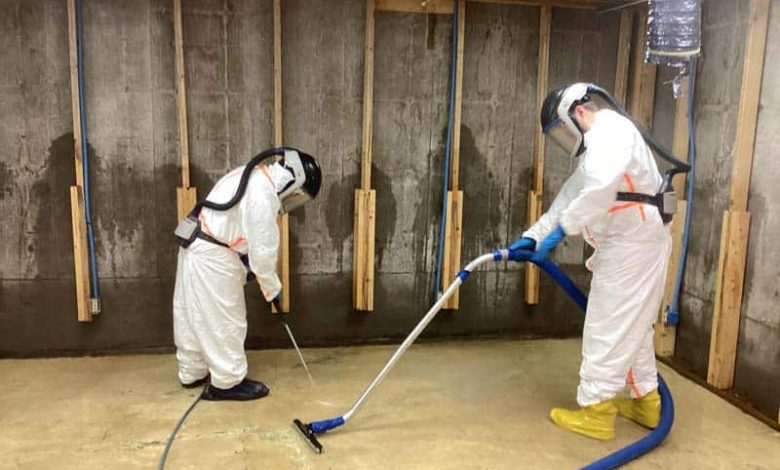The Hidden Dangers of Delaying Emergency Water Damage Cleanup at Home

Here’s the thing about water emergencies at home. They rarely look as bad as they actually are in the first hour. A little water around the base of a wall. A damp carpet. A small leak under the sink. It’s tempting to shrug and think you’ll deal with it later. But water never waits. It moves, hides, spreads, and starts causing damage within minutes.
This is where Emergency water damage cleanup becomes essential—not as a luxury, but as a serious line of defence against spiralling repair costs, health issues, and long-term structural risks. And yet, many homeowners delay taking action, often unaware of what’s happening behind the scenes.
Let’s break it down.
Water Travels Faster Than You Think
Water follows gravity and absorption. Even a small leak can seep behind walls, under floors, and into insulation before you notice what’s happening. Drywall, timber, and subflooring act like sponges, soaking up moisture that becomes impossible to remove with a towel or a household fan.
Left unattended, that moisture weakens foundational materials and sets the stage for structural problems that only get more expensive with time.
Mould Growth Starts Quickly
Mould isn’t a long-term concern. It’s a same-week concern—often within 24 to 48 hours of moisture exposure, according to the Government of Canada’s guidance on indoor mould. Once spores take hold, they spread through the air and start affecting indoor air quality.
The real problem? Mould isn’t always visible. It can thrive behind furniture, under flooring, and inside walls. The longer you delay cleanup, the deeper mould gets into your home’s structure, making remediation far more complicated and costly.
More info: https://www.canada.ca/en/health-canada/services/air-quality/indoor-air-contaminants/controlling-mold-home.html
Hidden Electrical Hazards You Can’t See
Water + wiring is never a safe combination. Even a small leak near electrical outlets, appliances, or hidden wiring routes can turn into a major hazard. Corroded wiring and short circuits can cause fires long after the initial emergency seems under control.
A qualified cleanup team checks for these risks early before they evolve into frightening surprises.
Structural Damage Isn’t Always Obvious
When moisture infiltrates beams, drywall, and flooring components, the integrity of your home begins to shift. You might notice small signs at first:
• Sagging or warped flooring
• Soft patches on walls
• Doors that suddenly don’t close right
But by the time these symptoms appear, significant behind-the-scenes damage has already started. Acting late simply gives water more time to degrade the home’s bones.
Increased Repair Costs With Every Day of Delay
Here’s what people often underestimate: the cost curve accelerates. A minor $500 extraction job can quickly turn into:
• Structural repairs in the thousands
• Flooring replacement
• Mould remediation bills
• Damaged furniture or electronics
• Insurance deductibles and potential premium hikes
What starts as an inconvenience becomes a financial hit you never expected.
Personal Belongings Aren’t Always Replaceable
Water can destroy things we don’t think about until they’re gone.
Family albums. Heirlooms. Original artwork. Important documents.
Some items are irreplaceable, even with the best insurance. Allowing water to linger increases the risk of permanent damage to sentimental or valuable possessions.
Respiratory Issues and Health Concerns Build Over Time
Excess moisture leads to higher humidity. Higher humidity invites dust mites and mould spores to put down permanent roots. That’s when indoor air quality begins affecting the people inside your home.
Common symptoms include:
• Allergy flare-ups
• Asthma triggers
• Persistent coughs
• Headaches
• Skin irritation
Children, seniors, and anyone with compromised respiratory health are hit the hardest.
Insurance May Not Cover Delays
This is the part many homeowners don’t realize. Insurance companies expect prompt action to prevent further loss. If they decide you delayed cleanup longer than necessary, they may deny coverage for resulting damage.
So even though you’re insured, unnecessary waiting could leave you paying for the bulk of repairs out of pocket.
Appliances and Mechanical Systems Can Fail
Water often reaches more than walls and floors. Furnaces, hot water tanks, washers, dryers, and major kitchen appliances can fail due to:
• Rust and corrosion
• Motor or sensor damage
• Bacterial contamination
Replacing even one of these systems can strain a budget fast. Delaying cleanup invites that possibility.
Fast Action Protects Home Value
Potential buyers look closely for signs of past water damage—stains, odours, uneven flooring, or recent patchwork repairs. A documented professional cleanup protects your home’s marketability by ensuring:
• Moisture is truly removed
• Structural elements remain sound
• No long-term mould issues linger
Skipping or delaying cleanup leaves a history you’ll have to explain later.
Don’t Wait and Hope It Dries
Water emergencies demand urgency for a simple reason: the damage compounds every hour it’s ignored. The sooner you take action, the more you control the outcome—costs stay lower, repairs stay minimal, and your home stays healthy.
If water has made its way anywhere it shouldn’t be, bring in professionals immediately. Fast response doesn’t just fix what’s wet—it protects everything you’ve built inside your home.



